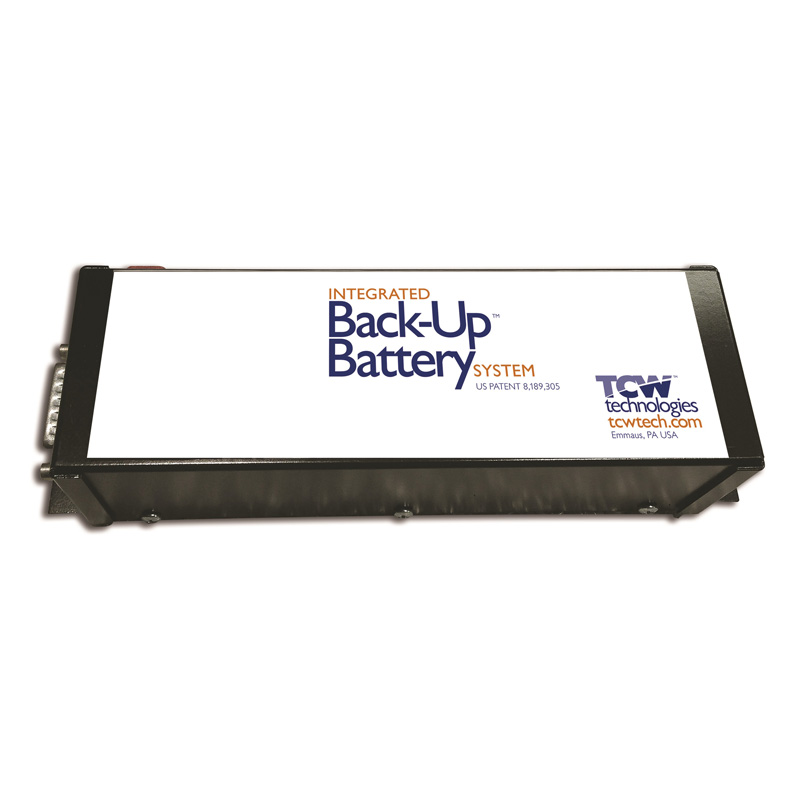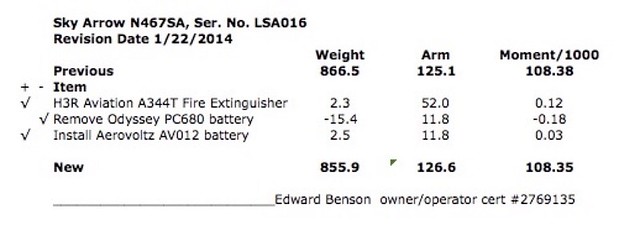Stewartb
Final Approach
Aircraft Battery STCs | EarthX Batteries
Installing a battery in your certified aircraft requires a field approval or an STC. Access STC documentation for our products for free.
 , in the nose where I need it most, I'm thinking I'm just going to order one. By FAR the cheapest dollars/ useful load gain available.
, in the nose where I need it most, I'm thinking I'm just going to order one. By FAR the cheapest dollars/ useful load gain available.A battery that appears to handle neglect/abuse better than a lot of the other options.3x the price gives you weight savings and….? Tia
People have paid a lot more to shed a lot fewer pounds.3x the price gives you weight savings and….? Tia

They have 24v batteries. They mention pending STCs at the bottom of the AML.I'd consider it if they had 24v. Not much price difference from the Odyssey.
The lady at the show said that and I must've made a face because she backpedaled and said their experimental batteries (which have been available for a long time) have been seeing about double the life of lead/acid.So $894 for the battery, they say it lasts 6 years. I get about 7 out of the Concorde as it is. Other than the weight savings, I don't see why I would jump ship.
This is a concern. The battery for my plane is more like half. Doing a little research into it, it seems like lithium batteries have a very flat discharge curve, maintaining voltage until they are empty, and doing so consistently even at higher draws. Apparently a 35AH L/A will provide 1 amp for 35 hours, but increase the load to 15A and it's far less than the 2 hours you'd expect, with the voltage dropping off faster as well. Supposedly the EarthX was sized to provide a similar usable reserve to the original L/A. TBH if the choice was between a 5lb 15AH battery and a 10lb 30AH, I'd take the latter. As it is, they show an hour or reserve at 15A, which is about what my plane runs normally. I always assumed I'd get about 30m out of my L/A, so I guess I'm comfortable with that.Also 1/3 the amp hour capacity.
Could be a BIG factor when flying IFR.
Please show your math.Also 1/3 the amp hour capacity.
With the P I’d probably end up needing ballast in the tail if I moved the battery forward. I don’t come near my GW even on long, loaded out, trips With full fuel. I do calculate WB, I fly out of a 2,000’ grass strip.On a 182 with the battery in the back, would there be less benefit owing it being already nose heavy? On the other hand, having such a long and older (corroded) battery cable replaced might be additional weight savings, as well as better cranking ability.
This is a concern. The battery for my plane is more like half. Doing a little research into it, it seems like lithium batteries have a very flat discharge curve, maintaining voltage until they are empty, and doing so consistently even at higher draws. Apparently a 35AH L/A will provide 1 amp for 35 hours, but increase the load to 15A and it's far less than the 2 hours you'd expect, with the voltage dropping off faster as well. Supposedly the EarthX was sized to provide a similar usable reserve to the original L/A. TBH if the choice was between a 5lb 15AH battery and a 10lb 30AH, I'd take the latter. As it is, they show an hour or reserve at 15A, which is about what my plane runs normally. I always assumed I'd get about 30m out of my L/A, so I guess I'm comfortable with that.
Didn't know that; good informationRemember, L/A capacity checks are done at 1C, so a 35 AH battery is run at 35 amps for 1 hour to not hit a specified voltage limit.
Agree wholeheartedlyIMO, they should double the capacity and weight. Still a goodly weight saving over lead acid.
The 3 bladed prop on my plane put my empty CG way forward; to the extent I've seriously considered finding a 2 blade prop to put on or spending the 18K for a composite MT prop. I can't put anything but pillows & blankets in my front baggage compartment, so taking 20+ lbs out of there is huge for me.BUT, on my Mooney, the issue is forward CG, so a lighter battery would need the additional of Charlie weights in the tail.
Actually, IEC 60952 defines tests at C1 as well as 10x ("rapid discharge capacity"). This typical lead acid battery has a rapid discharge capacity roughly half that of its C1 capacity.Remember, L/A capacity checks are done at 1C, so a 35 AH battery is run at 35 amps for 1 hour to not hit a specified voltage limit.
"I" won't.So if you bought a new battery 25 pounds lighter how do you determine/document your new CG and weight and balance?
Sent from my Pixel 7 Pro using Tapatalk

The 3 bladed prop on my plane put my empty CG way forward; to the extent I've seriously considered finding a 2 blade prop to put on or spending the 18K for a composite MT prop. I can't put anything but pillows & blankets in my front baggage compartment, so taking 20+ lbs out of there is huge for me.
It’s pretty straightforward. You take the old battery moment (weight x arm) and subtract it from the aircraft’s weight and balance. Then add back in the new battery’s data.So if you bought a new battery 25 pounds lighter how do you determine/document your new CG and weight and balance?

It means you can carry more useful load.My battery is in the tail, so lighter means the CG moves further forward.
What bugs?Saving 10# up on the firewall sounds good. I just put a new battery in last year, when it craps out I'll look at the lithium, hopefully and bugs have been worked out by then.
It's all relative. Not all lithium battery formulations are the same. EarthX uses lithium iron phosphate (LiFePO4). It's safer than lithium batteries you see in scooter fires that make the evening news, which typically incorporate cobalt and/or manganese.Lithium battery fire risk is 0?
No, I would have to install a Charlie weight in the tail to fixt the CG.It means you can carry more useful load.
Cheapest or easiest? Most of us could gain some useful by getting closer to that FAA standard adult.I talked to them at osh and they mentioned the stc's being approved. I figured I'd wait until my current battery dies, but now that I see it's 25 pounds lighter, in the nose where I need it most, I'm thinking I'm just going to order one. By FAR the cheapest dollars/ useful load gain available.
You're not wrong. I managed to take off 25 a few years ago, but the second 25 has proved to be more stubborn. And these damn kids just keep getting biggerCheapest or easiest? Most of us could gain some useful by getting closer to that FAA standard adult.

I'm chronically single but I know you can't say that!Funnily enough, suggesting to Mrs. K that we could save $1000 on a battery if she lost 20 lbs didn't go well, either....
For a light sport however, that can be a significant savings in weight, if you can make it work out on the w&b.Just replaced the battery in my 182P and considered the EarthX.
EarthX $900, 5.4 lbs, 15.6 Ah.
Concord $500, 32 lbs, 33 Ah.
For me the capacity of the battery outweighed the weight savings flying IFR.
I did a capacity test on the Gill 35 I removed. It was 13V 24 hours after charging but down to 16 Ah capacity (23 Ah new). Plane was getting slow to start with the 5 year old battery.
Some will value the weight savings more.
